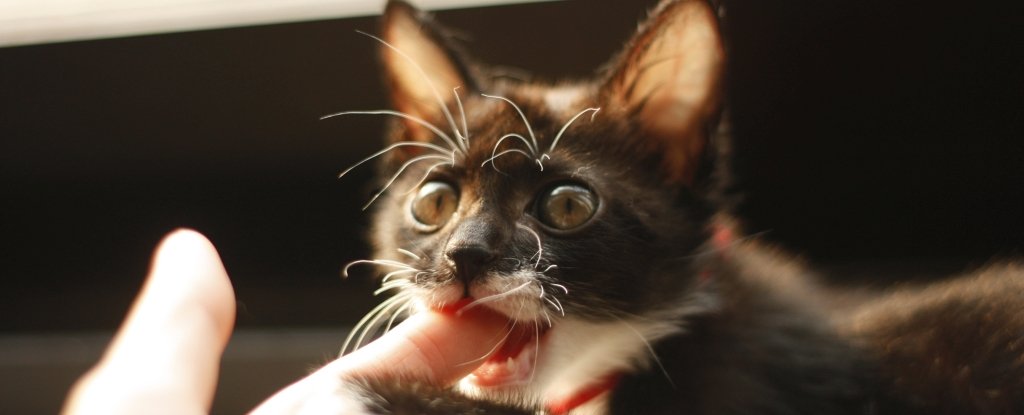Ghastly-Ghoulish, But Natural
"[Scientists and students document how a human body decomposes, their conclusions helping law enforcement, coroners and medical examiners to determine] what is natural that happens to a body and what is not natural."
"Any coroner or medical examiner will tell you of cases where a body was shut up with a pet that scavenged the owner eventually."
Melissa Connor, forensic anthropology professor, director, Colorado Mesa University, Forensic Investigation Research Station
"The main theory is that cats are, like, picky eaters. Once they find a food that they like, they'll stick with it."
Sara Garcia, student, Forensic Investigation Research Station
"We had a cat that came in when her owner had died, and the report said that she'd eaten the person's nose."
"It's not a behaviour problem. It's just a fact of life."
"I think it's two things; We project certain morals onto our pets, and we expect them to follow that moral code. And then I think there's the morbid curiosity."
Mikel Delgado, cat behaviour researcher, University of California, Davis School of Veterinary Medicine
 |
| A recent paper describes how feral cats scavenged two dead human bodies. (iStock) |
Past research has noted that pet canines -- and a hamster and a bird as well -- were described as having eaten part of their deceased human companions. Now, a new research paper, published in the Journal of Forensic Sciences, describe two different feral cats having been observed to repeatedly forage at two human corpses. Both of the cats displayed a preference for arm tissue in their preoccupation with consuming agreeable food sources in the form of decomposing human corpses.
 |
(seven/Moment/Getty Images)
|
The study resulted from an entirely random event, where forensic autopsy student Sara Garcia happened to view images captured on remote cameras at the facility, located a distance from houses, and close b a landfill attractive to feral cats.
Routinely scanning images, she was gripped with the sight of a cat in late 2017, and then another a few months later, feasting on two corpses.
What she witnessed confounded the accepted wisdom (and reality) of felines as predators, not scavengers. The bodies in question were in the early stages of decomposition when the cats discovered the new source of nutrition, and by the conclusion of their continued and ongoing snacking, had transformed into what's known as "moist decomposition" by which time both cats had eaten the flesh away to the bone.
The station with its 10-foot-high fence, wire-topped, extending two feet underground to refuse ingress to burrowing animals, has seen prairie dogs pop up frequently, paying no attention to the bodies. Cats, skunks and snakes are known to slither through gaps in and under a front gate, however. Constantly in search of food, feral cats are nothing if not open to opportunities; faced with the choice between starvation or scavenging a food source, why would they not?
There happened to be over 40 bodies lying around the research site at that time. The bodies are placed there for observation as they deteriorate naturally, in the open. Students at the facility update notes of the decomposition process. Corpses are voluntarily donated for research purposes to the facility, more familiarly called a "body farm". On its two acres of saltbrush-dotted desert, a few dozen corpses lie in various stages of decomposition at any given time.
 |
Adisak Mitrprayoon/iStock
|
Each of the cats returned exclusively to the body they had originally selected to feast on. One of the cats returned night after night for 35 consecutive nights. Claw marks left behind by the cats were scientifically valuable in light of the fact that this is the kind of activity rarely documented. Cat Behaviour researcher Mikil Delgado didn't find this cat behaviour surprising since she once worked at an animal shelter and had seen evidence of similar behavioral events.
To clarify the situation, this has the potential to occur when owners of pets happen to have medical conditions causing sudden death, and who are socially isolated -- meaning their bodies are not instantly discovered and secured -- become vulnerable to the possibility of being scavenged by their pets -- cats or dogs.
 |
"Due to the prevalence of feral cats throughout the United States and the world, understanding the patterns and behaviours of these scavengers can assist in distinguishing between perimortem and postmortem tissue damage."
"In both cases reported here, the feral cats targeted areas where the skin had been previously penetrated."
"Both cats showed preference for bodies in relatively early decomposition. Scavenging began when the bodies showed early signs of decomposition and ended at the onset of moist decomposition. The cessation of scavenging at the onset of moist decomposition may be explained by felids' preference for fresh tissue."
Researchers' conclusion
Labels: Bioscience, Feline Scavenging, Forensic Anthropology, Research

0 Comments:
Post a Comment
<< Home